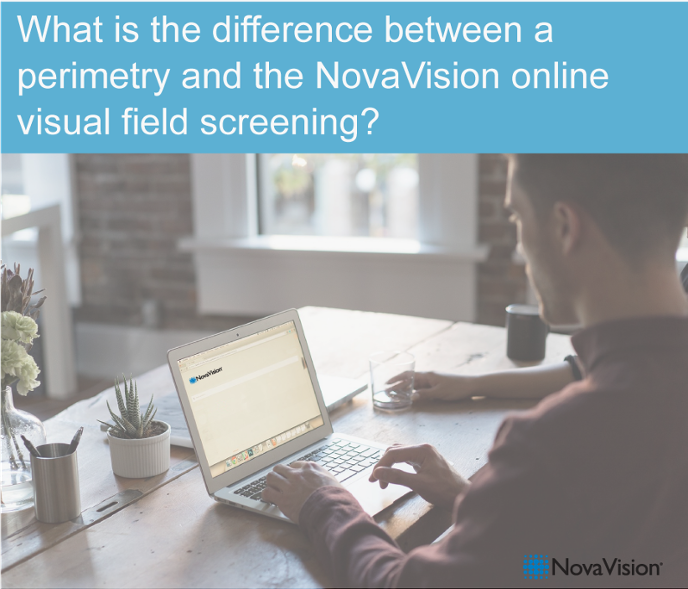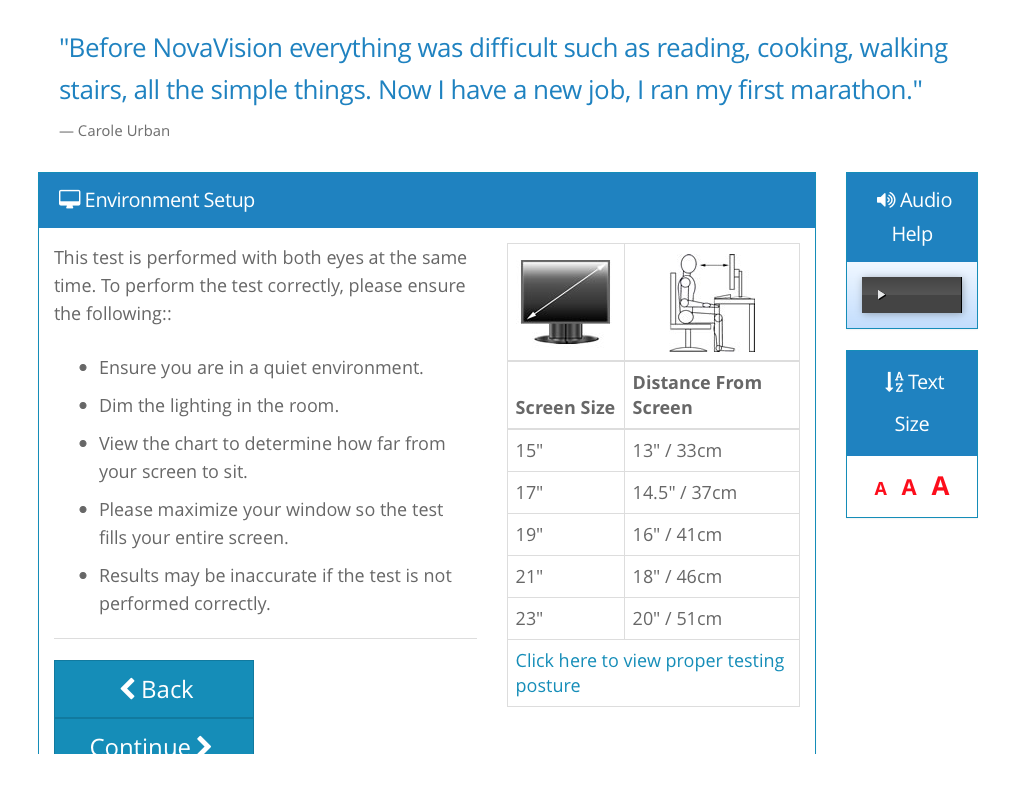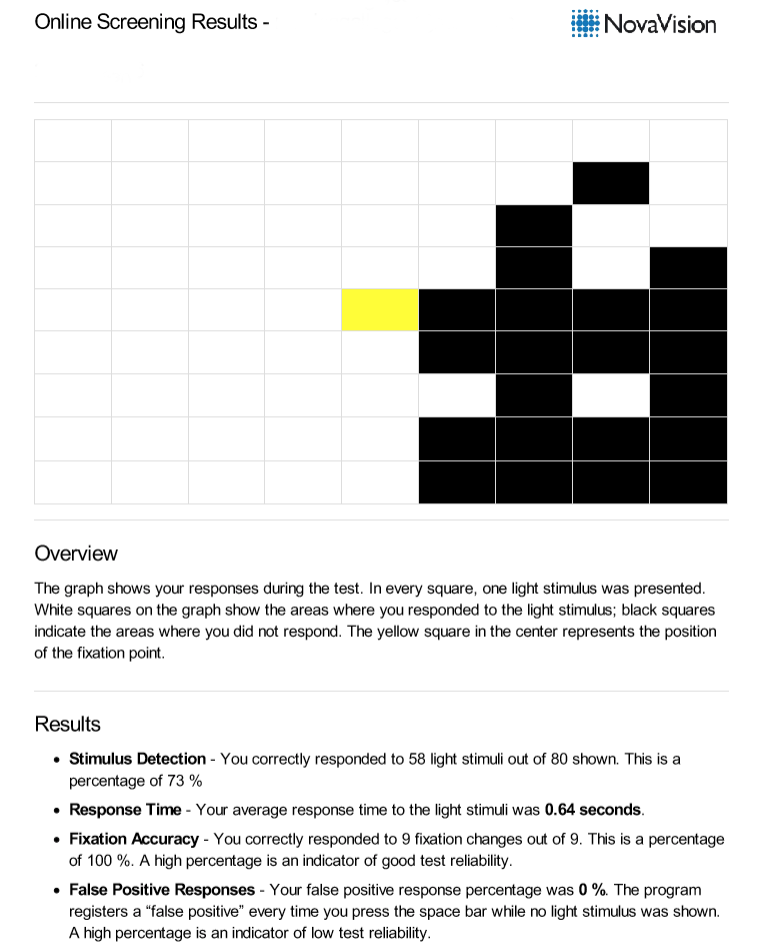
In our last blog “What is a visual field test?“ we have explained how a visual field examination is done using a perimeter.
Today we will analyze the differences between a visual field test using static perimetry and our online-visual field screening and reveal why the online test does not replace the examination by a doctor.
Tasks and Process
The basic concept of both examination methods and the two main tasks for the person tested are the same:
- During the examination you should always look at a fixation point and not move your eyes away from this dot (= fixate). You are required to press a response key whenever you see certain changes to the dot, e.g. a light flashing, or a color or shape change. This task controls whether fixation is retained.
- Light stimuli will be presented at different locations in the perimeter/on the screen – you should also press the response button when you see a light stimulus flash. With regard to this task there are major differences between the two methods.
| Static Perimetry | Online- visual field screening |
| On a light background, light stimuli are presented in several precisely defined brightness levels at each position. Thus, the minimum brightness at which the light stimulus can just be seen is determined for every position. There are different examination programs, e.g. for the complete 90 degree-visual field, for the 30 degree-visual field or the central 10 degree-visual field only. Depending on the test program selected, the examination may last between 7 and 15 minutes. | On your computer screen, one high-contrast bright light stimulus is presented on a dark background at each position of the defined visual field area. This area is the central 22 degree-visual field. The screening lasts only a few minutes.
|
Observation of test requirements
To get test results that are reliable and represent visual functions as precisely as possible, the test should be administered in standardized fashion. Test requirements need to be met and tasks should be accurately executed. In an ophthalmology practice standardized procedures are ensured by use of a calibrated perimeter and by medical staff monitoring the test.
When performing the online-visual field screening at home you have to make sure yourself that instructions are carefully observed to create optimum test conditions:
Monocular versus binocular Examination
| Static Perimetry | Online- visual field screening |
| Typically, each eye is tested separately (monocular), the eye not being tested will be covered. This ensures that visual field defects affecting both eyes at the same time (e.g. homonymous hemianopia after stroke) and also defects affecting only one eye (e.g. visual field impairment as a result of glaucoma) are discovered.
Occasionally perimetries are performed with both eyes (binocular), for example to determine the complete available visual field for driving ability.
|
NovaVision offers vision therapies for neurological visual field loss, mostly after damage to the visual pathway in the brain after a stroke. This type of vision loss is nearly always “homonymous“, that means it affects both eyes. Therefore the vision loss – homonymous hemianopia, scotoma and quadrantanopia – can be discovered when both eyes are examined together.
If only one eye is affected by a vision disorder, this would not show in a binocular test since the healthy eye would see everything. |
Online-Visual Field Test Results Report
After completion of the online-visual field test you receive an evaluation in graphic form with additional explanation of the parameters.
The example below shows an incomplete hemianopia to the right. See in comparison the same vision disorder displayed via static perimetry in our last blog.

Conclusion
The NovaVision online-visual field screening follows the concept of a perimetric visual field examination.While the eyes are fixated, light stimuli are presented in the visual field. When they are perceived they shall be confirmed by pressing a button. The response pattern showing the performance level of visual functions in the different areas of the visual field is displayed in a graph. Exact adherence to test instructions is precondition for reliable results.
The online-visual field screening is designed to provide a quick overview of your binocular visual field through a testing procedure performed at home on your own computer. If you are affected by homonymous visual field loss in your central visual field, this would likely be displayed in the screening report. Then you should arrange for an immediate examination of your visual abilities by an eye doctor.
Visual disorders other than the mentioned homonymous visual field loss cannot be established with the online-visual field screening. When test requirements are not correctly followed, a homonymous visual field loss might not show in the results either. Therefore, the visual field screening can never substitute the ophthalmological examination.
Your vision is a very precious asset. To preserve it, go to your eye doctor regularly for proactive checkup, and go immediately when you notice changes or impairments to your vision!
If you would like to take our online visual test click here to begin.


